By Marc G. De Santis
It was the autumn of 333 bc and Alexander the Great stood triumphant on the battlefield of Issus. All around him lay the corpses of his defeated enemies, the vast host of Persian King Darius III who had been routed by Alexander’s Macedonian soldiers. Darius himself had been forced to ignominiously flee from the field, leaving behind his personal treasure and even his family. The king’s wife, mother, and daughters were now in Alexander’s possession. Although Darius had been soundly beaten, he had escaped capture. Alexander realized, however reluctantly, that he would have to march inland to deal with Darius once and for all. (Take a deeper dive into the wars of antiquity inside Military Heritage magazine.)
Alexander was very young, only 23 years old, but Achilles, too, had been young when he went off to fight at Troy. Alexander, his annotated copy of Homer’s beloved Iliad always with him, sought to emulate and surpass the ancient heroes of Greek legend. Just as Achilles had fought in the front rank of his Myrmidons, so too did Alexander fight at the forefront of his Macedonians. What the deified Heracles had done, he would also do. If Heracles had marched somewhere, Alexander would march even farther. The heroes of Greek mythology were very real to Alexander, and served as both inspiration and goad to his conquest of Persia and, ultimately, the entire known world.
Alexander’s invasion had made extraordinary progress since he had crossed the Hellespont into Asia in the spring of 334 bc The Macedonians had defeated two major Persian armies, one at the Granicus River in May 334 bc, the other at Issus 17 months later. Several satrapies in Asia Minor, as the Persian empire’s western provinces were called, had fallen to Alexander. Asia Minor was now relatively secure, but Alexander still faced a difficult strategic predicament. He realized that a final accounting with Darius was impossible to avoid if he was to realize his boyhood dream of conquering Persia. Darius had meanwhile fled to the eastern domains of his empire, where he was busily recruiting a new army with which to confront the upstart Macedonian boy-king. Other Persian forces, including their naval allies in the eastern Mediterranean—the island kingdom of Cyprus and the Phoenician city-states of Sidon and Tyre—were much nearer to hand, and that was the problem. Alexander dared not venture into the interior of southwestern Asia while the Mediterranean seaboard was still controlled by forces loyal to the Persian king.
Many In Greece Wanted Alexander To Fail
Problems loomed from other quarters as well. There were still many in Greece, only recently subjugated by Macedonia, who would be delighted to see Alexander’s grand venture against Persia fail. The idea of a united Hellenic assault against Persia had been debated in Greece for many decades, but until the advent of Alexander the Great no one had dared to attempt it. The current pan-Hellenic war against the Persians was being led by Macedonia, an interesting development since Macedonia had long been considered a rough-mannered, uncultured backwater, its hard-drinking people deemed barely Grecian by the more sophisticated Hellenes to the south. Under the visionary leadership of Alexander’s father, King Philip II, Macedonia had enforced a grudging alliance on the Greek states. Alexander was leading that alliance on a mission to punish the Persians for their many real or imagined transgressions during previous Persian invasions of Greece some 150 years before. Yet many Greeks hated Alexander even more than they hated the Persians, believing him to be the chief reason for the loss of their ancient liberties.
Despite his comparative youth, Alexander was no fool. He realized that if the remaining Persian forces in the west could somehow combine with the disaffected faction in Greece, he would find himself trapped in Asia with hostile Persians to his front and rebellious Greeks to his rear. It was imperative for Alexander to defeat, or at least neutralize, the Persian navy, which operated out of the islands and city-states of the eastern Mediterranean and even now was openly campaigning against him in the Aegean Sea. Alexander’s resources, however, were limited, and he could not hope to match Darius by building a fleet to compete with the Persians. Instead, Alexander decided on a different course. Persian naval forces were heavily dependent upon land bases for rest and refitting. Their war galleys were crewed by large numbers of rowers and marines, whose physical endurance was limited by the minimal provisions they carried with them. The lightly equipped galleys were unable to stay at sea for very long or conduct lengthy blockades. Sooner or later they would have to retire to port to reprovision. If Alexander could deprive the enemy’s naval forces of their bases, he could, in effect, defeat them without ever having to go to sea himself. Alexander planned to win control of the seas by winning control of the coastline.
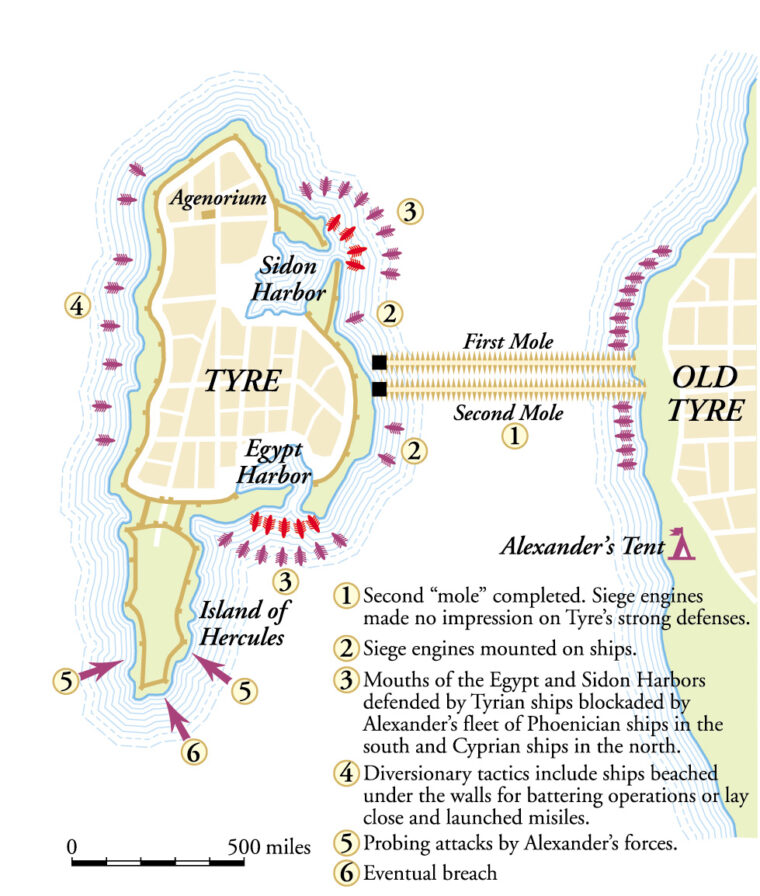
Tyrians Deny Macedonians Entry
As with all military plans, this was more easily said than done. The western coast of Asia was dotted with many well-fortified cities. The stoutest of all was Tyre, an ancient Phoenician city grown rich on the strength of its maritime commerce and formidable navy. Alexander and his army drew up before Tyre in January 332 bc, and the young king could not have liked what he saw. The Macedonians had previously taken a fortified city, Halicarnassus, in Asia Minor, but Tyre was an entirely different matter. The city was built on a small island separated from the coast by a half-mile of open water. The island had two well-used harbors, one in the north and one in the south. Tyre was a natural fortress improved upon by man. Its thick walls were, in some places, 150-feet high. Having once withstood a 13-year siege by the Babylonian King Nebuchadnezzar, Tyre was considered impregnable by its proud inhabitants, many of whom watched warily from their battlements as the blond-haired monarch from the north approached.
A delegation of leading Tyrians emerged from the city when Alexander’s army drew close and formally greeted the young king. They told Alexander that the people of Tyre had decided to do whatever he might command—within reason. Alexander needed to gain access to Tyre, and he now devised a rather dubious excuse to do so. He wished to enter their city, he told the Tyrians, so that he might make a sacrifice at the ancient temple of the Tyrian god Melqart, whom the Greeks identified with their own god Heracles. The Tyrians, not wishing to offend their longstanding client, King Darius, by offering too much hospitality to Alexander, politely declined. It was a time of high religious festival in Tyre, and allowing Alexander entry into the city might be construed as quasi-official acknowledgment of his overlordship. The Tyrians suggested instead that Alexander make his sacrifice to Heracles in the Old City, which was opposite the island on the mainland. They would happily obey all his other commands, the Tyrians said, but they would not allow either Persians or Macedonians to enter their city while the outcome of their war was still in doubt.
An Enraged Alexander Plans to Lay Siege To Tyre
Alexander was enraged when he heard the Tyrian refusal. He quickly summoned his leading officers to his tent and began making plans to lay siege to the city. With his matchless charisma, he soon instilled in his soldiers a fierce desire to take Tyre. Somewhat conveniently, Alexander claimed to have had a dream in which Heracles took him by the hand and led him into Tyre. Naturally, Aristander, the king’s court seer, regarded this as a favorable omen. Nevertheless, good omens aside, persuading his men to besiege Tyre and successfully achieving its downfall were two very different things. Situated as it was upon an island, Tyre was protected by a natural moat, and the water was 18 feet deep where it came closest to the Phoenician shoreline. Moreover, the Persian navy, a large component of which was provided by Tyre itself, was still in overall command of the sea. Taking a fortified city was never easy, and Tyre would be a particularly tough nut to crack.
Fighting Tactics Subject to Change
The awesome Macedonian phalanx, bristling with rank upon rank of warriors armed with long pikes, was the ultimate refinement of the ancient Hoplite phalanx. Unlike the Greek city-states that had developed the formidable fighting formation, Alexander supplemented the phalanx with support troops of all kinds, fielding perhaps the first truly integrated combined-arms force. Most prominent among these was Alexander’s elite cavalry, which spearheaded the awesome striking power of the Macedonian army. Alexander’s preferred tactic was to advance his phalanx along a broad front and fix the enemy in place while he, at the head of his cavalry, struck furiously at the heart of the enemy line. This hammer-and-anvil approach had brought Alexander victory after victory, most recently at Issus. At Tyre, however, such tactics were subject to change. This would not be a battle fought on an open plain, but rather a siege of a strongly fortified city. Here the phalanx formation was useless, and Alexander somehow had to find a way into Tyre before his soldiers’ fighting ability could make a difference.
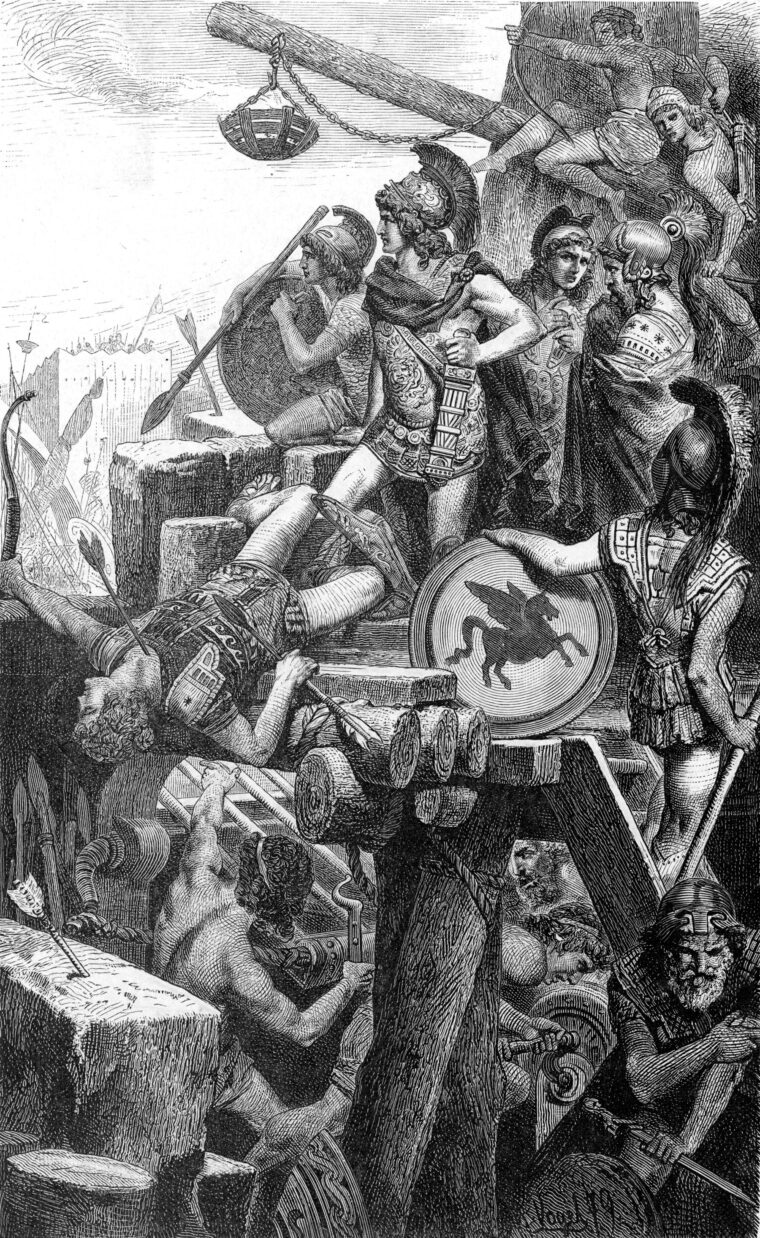
Making Use of a Wide Range of Equipment
Alexander did have some factors working in his favor. The Macedonian army was unprecedented in the Greek world in many ways, not least of which was its formidable siege train. A powerful arsenal of siege machines was something of an innovation in Greek warmaking. The earlier armies of the city-states had rarely been equipped to take fortified places, and they usually had contented themselves with merely ravaging the surrounding territory. Alexander, by contrast, brought a new and frightening potency to siege warfare. Presaging his relentless and ruthless approach to war, Alexander made use of a wide range of equipment, including arrow launchers, rock throwers, and siege towers. Along with their combat engineering skills, these weapons allowed the Macedonians to attack even the best-defended fortifications.
Alexander’s siege machines were also made distinctive by their ingenious construction. The Macedonian siege train included a remarkable array of different types of arrow and stone projectors, which were the primary artillery used by Alexander’s army. With the invention of gunpowder still far in the future, Alexander’s engineers had to rely on the use of muscle and mechanical power to throw arrows or stones over long distances. The Macedonian catapult used for this task was akin to a gigantic crossbow. It differed from the crossbow in that the mechanical energy used to launch its projectiles was stored not in the arms of the bow, but in thick bands of twisted animal sinew. The sinew was strong and elastic, and these properties allowed it to store energy in a relatively compact space. Two bundles of sinew cord, one on each side of the weapon, were mounted upright, perpendicular to the projectile. By means of levers, the operator of the weapon would twist the bundles of sinew cord along their longitudinal axis. This process, known as torsion, stored energy in the twisted cords of sinew until they were taut. Upon release, the bundles of sinew would unwind, transferring the stored energy by means of two arms embedded within the bundles to a bow string, which then hurled the projectile forward. While this type of mechanical artillery lacked the flash and bang of gunpowder-loaded cannon, it nonetheless proved quite useful in ancient sieges. It had greater range than a man-powered bow, and as some of the stone projectiles weighed over 30 pounds, could also hit harder. Such weapons would play a significant role during the coming siege.
As to the day-to-day conduct of the siege, the first problem that confronted Alexander was simply how to get at, and through, the walls of Tyre. They were far away from the mainland, and over water 18 feet deep. Alexander ordered the construction of a stone and earthen causeway, or mole, to be built from the mainland out to the city. The Macedonians chose the shorter but deeper route, and began to fill in the channel with stones and wood. The buildings of Old Tyre were ruthlessly dismantled to provide material for the proposed causeway.
Alexander’s Soldiers Build Two Siege Towers
As the construction of the mole progressed, the Tyrians sailed out of their safe harbor and taunted the laboring Macedonians. They asked the workers if they were trying to challenge Poseidon, the ancient god of the sea, by building their mole across the water. As the mole came closer to the city, however, the Tyrians lost their swagger and began to take the threat more seriously. As the mole came within range of Tyre’s walls, the Macedonian soldiers were hit with numerous missiles launched from Tyrian war galleys. Since the Tyrian ships had nothing to fear from enemy galleys, they were able to approach quite close to the mole and strike the Macedonians at various spots, making continuation of the construction work impossible. In response, Alexander had his soldiers build two siege towers and cover them with wet hides to protect against enemy fire arrows. On the tops of these towers the Macedonians placed artillery to retaliate against the Tyrian war galleys that came too close. At the same time, a stockade was put up around mole’s perimeter.
In response, the Tyrians built a fireship, a vessel loaded with combustible materials and covered with pitch and brimstone. From the yard-arms of the masts they hung large pots of flammable substances. A heavy ballast was placed in the stern, which caused the bow of the ship to rise out of the water. When a favorable wind arose, Tyrian triremes (oared ships) towed the fireship out of the harbor and ran it aground on the mole. The sailors on board the fireship tossed their torches into the vessel and leaped away, swimming safely back to the city. The ship quickly became engulfed in a mighty conflagration as the flammable materials packed on board ignited. The hanging pots spilled their contents onto the mole when the flames caused the masts to collapse. Meanwhile, the crews on the other Tyrian vessels remained nearby and showered the siege towers with missiles, thereby preventing the Macedonians from getting close enough to fight the flames. When the towers themselves began to burn, a general sortie of Tyrian ships struck the mole at all points. The Tyrians knocked down the stockade around the mole and destroyed all the Macdeonian siege engines positioned on it.
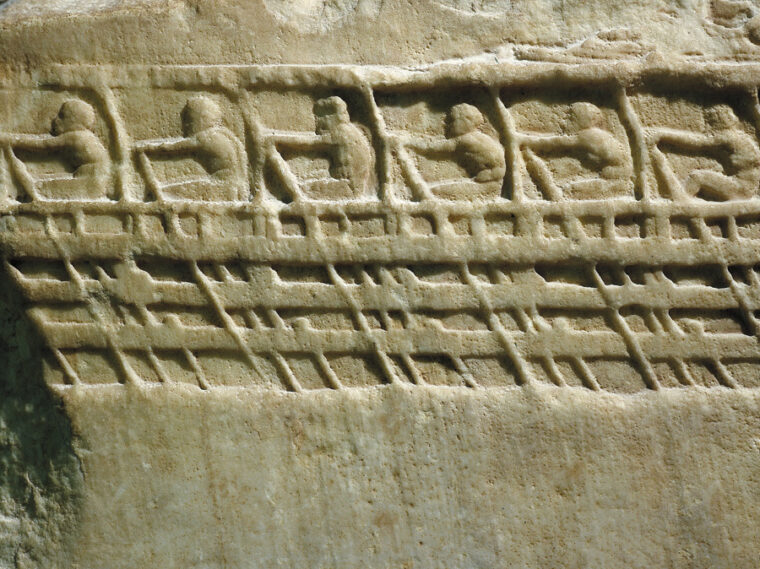
Alexander Refusing to Admit Defeat
The Tyrian attack was a bitter blow for Alexander, who watched in disgust as his mole and the expensive siege equipment on it went up in flames. The young king, however, would not admit defeat, and he immediately began construction of second, wider mole that could hold more towers. Whole trees were dumped into the water to fill up the depth, while Alexander’s engineers went to work building new siege engines.
Realizing that as long as the Tyrians held command of the sea he would have a terrible time trying to reach the city and breach its walls, Alexander left with his guards and some light infantry and made for the nearby town of Sidon, where he requisitioned a number of that city’s triremes. At the same time, two other Phoenician kings, Gerostratus of Aradus and Enylus of Byblos, guessing which way the fortunes of war would probably go, deserted the Persian fleet and came over to Alexander with their ships. Cyprus, awed by the news of Alexander’s victory at the Issus, sent a fleet of 120 vessels to join him, while Rhodes and several other minor powers also sent ships to aid Alexander. Soon the king had amassed a formidable fleet numbering over 250 vessels.
Work on the Mole Continued Unimpeded
Returning to Tyre, Alexander moved against the city with his newfound fleet, and the Tyrians, daunted by the size of the enemy force, hung back, blocking the harbor mouths with their galleys. Seeing that the Tyrians would not take the bait and sail out from their city, and not wishing to try and force his way into the well-guarded harbors, Alexander stationed the Cypriot fleet outside the northern harbor and the Phoenicians ships outside the southern. With the Tyrians thus effectively bottled up in their harbor, work on the mole could continue unimpeded.
Newly built siege engines were brought onto the mole, while other weapons were put aboard ships and moored nearby. The Tyrians countered with wooden towers mounted on top of their battlements.
At length, the Macedonians launched a major assault against the 150-foot-high walls. Tyrian artillery was frightfully effective, causing the Macedonian ships to hang back from supporting the attack. The Tyrians tossed so many large stones that they became an underwater hazard to Macedonian ships attempting to get close to the city. Alexander had his ships try to hoist the stones out of the water with ropes, but Tyrian ships closed with the attackers and cut the anchoring cables of the Macedonian galleys, making it impossible for them to gain the leverage needed to extract the stones from the water. Alexander countered by sending other ships to protect the ones engaged in removing the stones, but the crafty Tyrians responded by sending divers to cut the anchor cables. The Macedonians in turn replaced their cables with chains, which the divers could make no impression on. Ultimately, the Macedonians succeeded in pulling the stones out of the water by means of cranes, and dropping them into deeper water, where they would not be a danger.
Tyrians Launch Surprise Attack
The Tyrians were greatly alarmed at this development, especially since the mole now extended almost to the walls of the city. Accordingly, they planned a surprise attack against the Cypriot fleet blocking the northern harbor. They placed sails across the mouth of the harbor so that they could man their vessels in secret. At midday, when the Cypriot sailors were reprovisioning and Alexander had retired to his tent for his usual noon rest, the Tyrians sallied forth with 13 war galleys, each carrying the best crews and marines the city could muster. Emerging quietly from the northern harbor, not daring even to mark time for the rowers for fear of being overheard, the Tyrians fell upon the unsuspecting Cypriots.
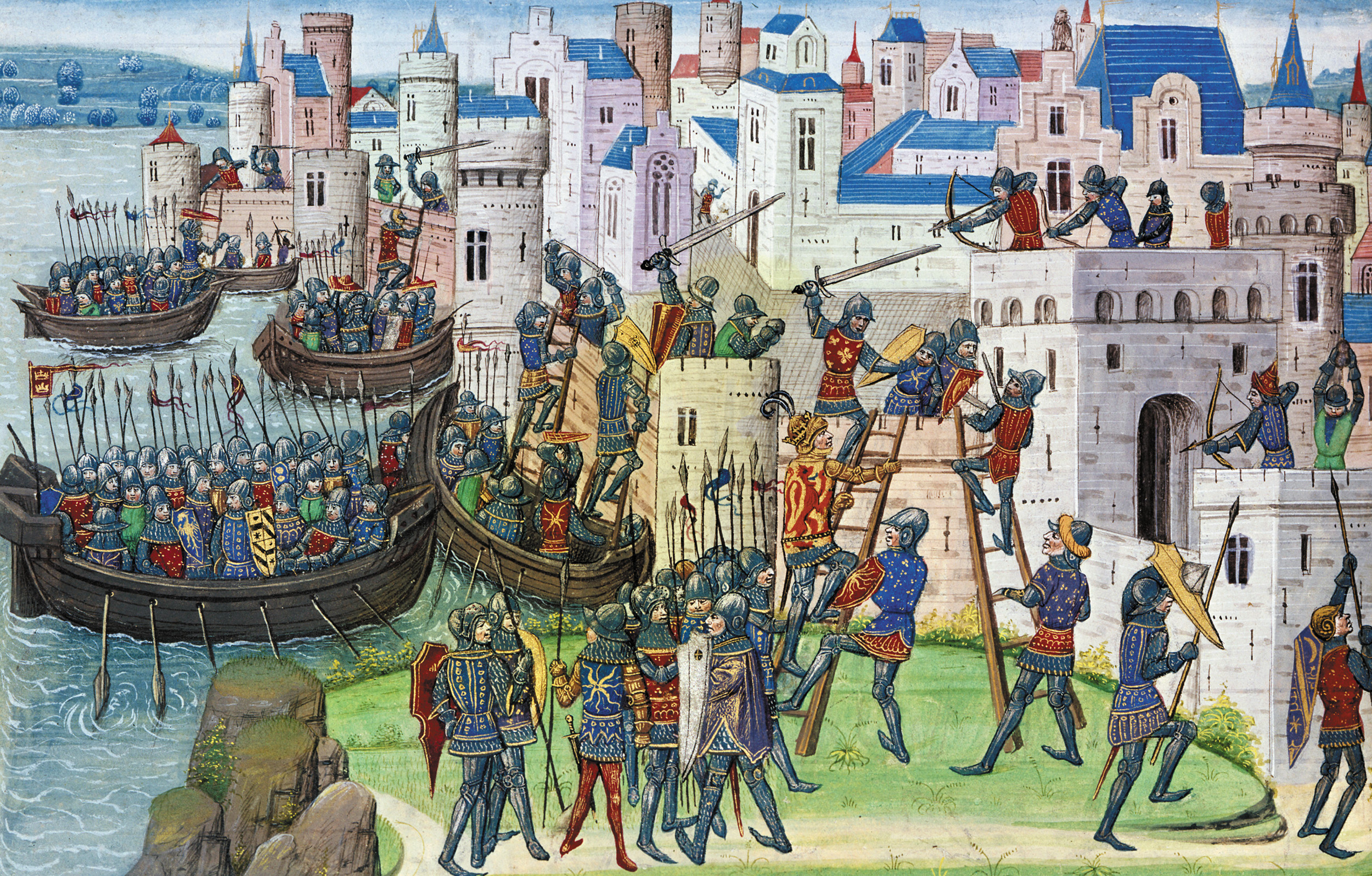
Some of the moored Cypriot vessels were entirely empty of crew, while others were just being remanned when the attack began. A number of Cypriot ships were quickly destroyed, but Alexander, who had arisen unexpectedly, pulled together all the ships he could summon. Most of these he sent to block the northern harbor to prevent the Tyrians from sending out reinforcements. With the remainder he sailed forth to strike at the attacking Tyrian vessels. The Tyrians high on the battlements saw Alexander’s force swinging around the city to attack their warships. They attempted to alert their compatriots of the impending attack, but no one could hear them over the din of battle. Somehow, the Tyrians managed to signal their ships that Alexander was approaching, and the war galleys desperately made for the harbor. Most were caught by Alexander’s ships and badly damaged or captured, but a few managed to escape. Many of the Tyrian marines, seeing that their ships were trapped, jumped into the sea and swam back to the city.
Tyrians Fight Back the Macedonian Attackers
Construction of the mole continued unceasingly until it finally reached Tyre’s walls. Alexander brought up his siege engines, hoping to hammer out an opening in the Tyrian defenses, but the walls were well made, and the Macedonian weapons did little damage. Alexander put other engines aboard ships and sailed around the island, seeking a weak spot. He had little success until he reached the southern wall. There he managed to crack the wall with missiles, causing a large section to collapse and open a breach. As usual, Alexander, was in the lead, throwing a boarding bridge from the ship into the breach. The Tyrians fought back with all the fury of the demonically possessed and managed to drive off the Macedonian attackers.
Everywhere along the walls the Tyrians repulsed the Macedonians with a combination of near-suicidal bravery and ingenuity, hurling pots of fire and missiles of all kinds at the enemy. Fighting desperately, the Tyrians used every conceivable device and artifice to keep the Macedonians from breaching the walls. Bags filled with seaweed were placed on the outsides of the walls to lessen the impact of stones striking them. When the Macedonians approached the walls with their siege towers and threw their the bridges across the top, the Tyrians courageously stepped onto the bridges and traded blows with the Macedonians. Other Tyrians dropped fishing nets onto the Macedonians as they clambered across the boarding bridges, causing them to fall to their deaths. The defenders also heated sand to a red-hot temperature and released the material into the air. As it drifted downward it found its way under the armor and clothes of Alexander’s troops, clinging to the skin and horribly burning the Macdeonians. In their frenzy the Tyrians killed a number of Macedonian prisoners on their battlements, in full view of their aghast compatriots. The Macedonians would show no mercy now.
Alexander Calls on Men To Follow Him into Battle
The outcome of the seven-month siege hung in the balance. The Macedonian attackers were exhausted by their physical and emotional exertions, and Alexander contemplated discontinuing the siege and moving on to Egypt. He soon rejected this course, however, thinking it shameful to leave the operation and its weapons in Tyrian possession. Instead, Alexander let his men rest for two days before issuing the call for one more push. On July 30, 332 bc, the seer Aristander had divined that the omens for taking Tyre were favorable and that the city would fall before the month was out. Aristander’s prediction was greeted with widespread derision since it was already the 30th of the month. Not wishing to allow the visionary’s prophecies to lose credence, Alexander simply declared that the date was really the 28th. The king stood before his assembled men and called on them to follow him yet again into battle.
One more massive assault was made on Tyre’s defenses. The entire Macedonian fleet sortied against Tyre from the sea, while Alexander brought up his most devastating engines, mounted on galleys, to a weak point in the city’s walls. There a section of wall was hammered down, and the siege engines were ordered to withdraw. Two other war galleys carrying boarding bridges now rowed forward and lowered the bridges onto the breach. Followed by some of his best troops, Alexander dashed across one bridge and stood on the island. He ordered his ships to beach themselves wherever they could and throw up as many arrows and missiles as possible to distract the defenders. Alexander and his men soon gained possession of a section of wall and seized control of several towers. Then Alexander made his way to the royal palace and pushed into the lower city.
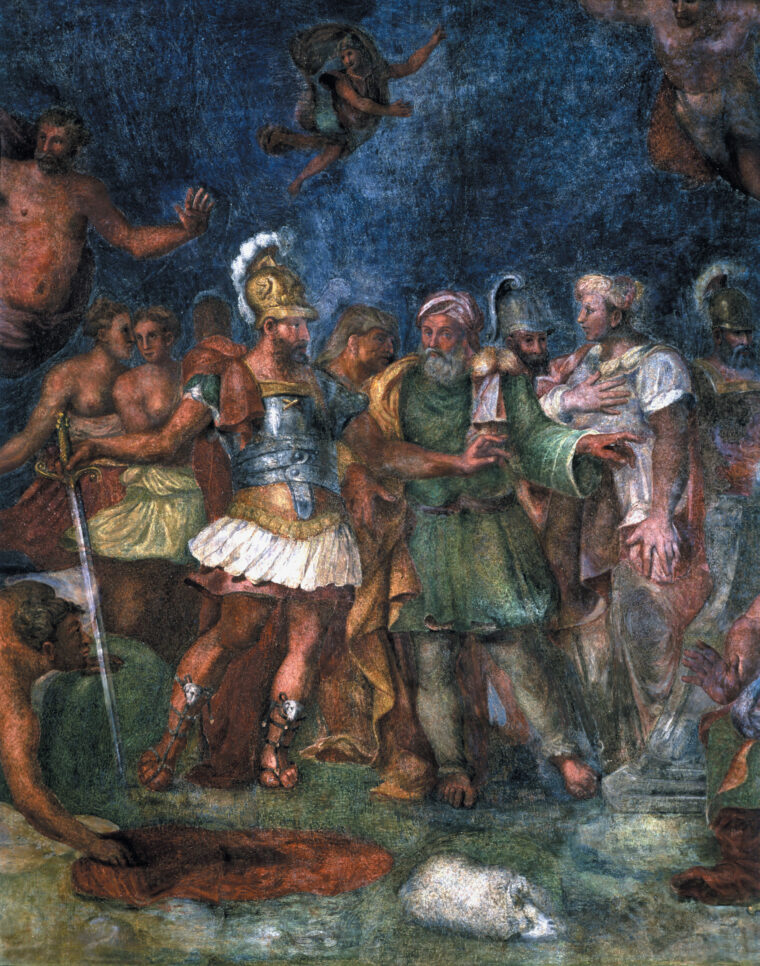
Meanwhile, the Phoenician fleets sortied successfully into the southern harbor, and the Cypriot fleet fought its way through the Tyrian defenses into the northern harbor. Here the harbor was only lightly defended, and the Cypriots quickly captured that portion of the city.
Thousands of Tyrians Slain in City
The main force of Tyrians abandoned the wall once it had been taken by Macedonians and made a last stand at the inner city’s Shrine of Agenor. The Macedonian soldiers, filled with anger and frustration at the lengthy siege and the memory of their executed comrades, slaughtered the Tyrian defenders in huge numbers. The soldiers’ blood was up, and the Macedonians ran wild in a brutal release of pent-up fury. Young girls and boys took shelter in the temples, hoping for pity from the conquerors, but Tyrian men of military age stood firm, fighting to the last in the doorways or on the rooftops of their homes. In the end, some 8,000 Tyrians were slain in the sack of the city; Macedonian losses were placed at the implausibly low figure of 400.
Alexander, despite his typical bloodlust, gave pardons to a number of high Tyrian officials. Among these were King Azemilcus and a group of Carthaginian envoys who had sought refuge in the Temple of Heracles where they had come to make a sacrifice to Melqart/Heracles, just as Alexander had originally wished to do. Apart from these fortunate few, however, the fate of the Tyrians was swift and brutal. Almost all of the other survivors, some 30,000 in all, were rounded up and sold as slaves.
At the end of the sack, with his men exhausted from the killing, Alexander was still filled with rage. He had another 2,000 Tyrians crucified along the beach outside the wretched city. By insisting on fighting alongside his men and exposing himself to unprecedented dangers, Alexander not only risked terrible wounds, but also allowed himself to become caught up in the frenzy of the moment. Furious at the Tyrians for daring to defend their own city, Alexander let his anger cloud his judgment. This was the dark side to Alexander’s heroic style of leadership. If an opponent put up a brave fight and then submitted to Alexander, the king was likely to be chivalrous and pardon his foe. If, on the other hand, the enemy continued to thwart him, especially by provoking a prolonged siege, Alexander was often murderous. Tyre would not be the last of Alexander’s atrocities.
Alexander Declines Darius’ Offer
During the siege of Tyre, Darius had written to Alexander offering the Macedonian king all of his empire west of the Euphrates River, $300 million in gold talents, and the hand of his daughter in exchange for peace and the safe return of the royal family captured at Issus. Alexander refused, saying that Darius merely offered him what he had already won in battle. If he wanted to marry Darius’s daughter, he could already do so without the king’s long-distance approval. Alexander had come to Asia to inflict righteous vengeance upon the Persians for their invasion of Greece 150 years before. If Darius wanted his family members back, Alexander continued, then he should come in person to ask for their return. Finally, said Alexander, the Persian king should not consider himself his equal, and he should address all future correspondence to Alexander as the Lord of Asia. There would be no stopping the Macedonian juggernaut short of defeat in battle.
Taking Gaza, Last Obstacle To Egypt
For Alexander, the way to Egypt was almost clear. After Tyre, just one obstacle lay in Alexander’s path: the city of Gaza, 150 miles south on the Mediterranean coast. There the Persian-appointed governor, a eunuch named Batis, had the temerity to resist Alexander. Once again, Alexander laid siege to an enemy city. The Macedonians built a 250-foot-high mound at the southern wall of the city upon which they set their siege engines, which had been transported there by sea, atop the mound. After three months of continual bombardment, Alexander led an assault on the devastated city. Gaza fell after putting up a stiff fight. Alexander, his will again denied and suffering from a painful wound to the shoulder inflicted by a Gazan catapult, was livid. Like the Tyrians before them, the residents of Gaza were sold into slavery, and the city was repopulated with settlers loyal to Alexander who were imported from neighboring areas. Egypt would soon fall to the Macedonians and with it the last of Persia’s bases on the Mediterranean.
One last, horrific scene remained to be played out. Alexander had the unfortunate Batis stripped naked and leather thongs strung cruelly through his ankles. Then the king had Batis tied to his chariot and dragged him around the walls of Gaza until he was dead, just as Achilles had desecrated Hector’s corpse in the Iliad. In this way Alexander, who often emulated the best of the Homer’s heroes, now openly replicated their worst. As the historian Robin Lane Fox has concluded, Alexander may have been a romantic at heart, but “a romantic must not be romanticized, for he is seldom compassionate.”
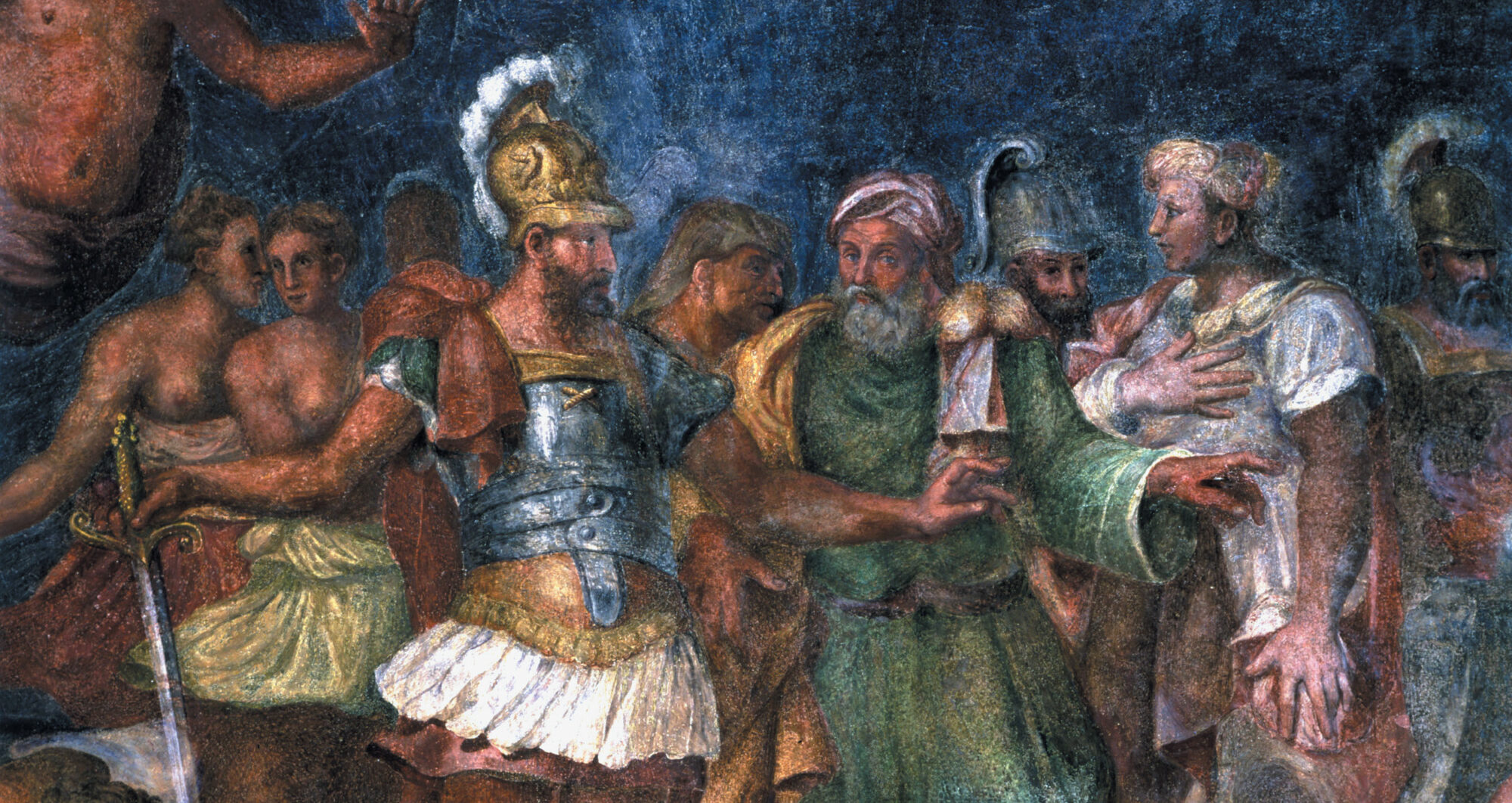
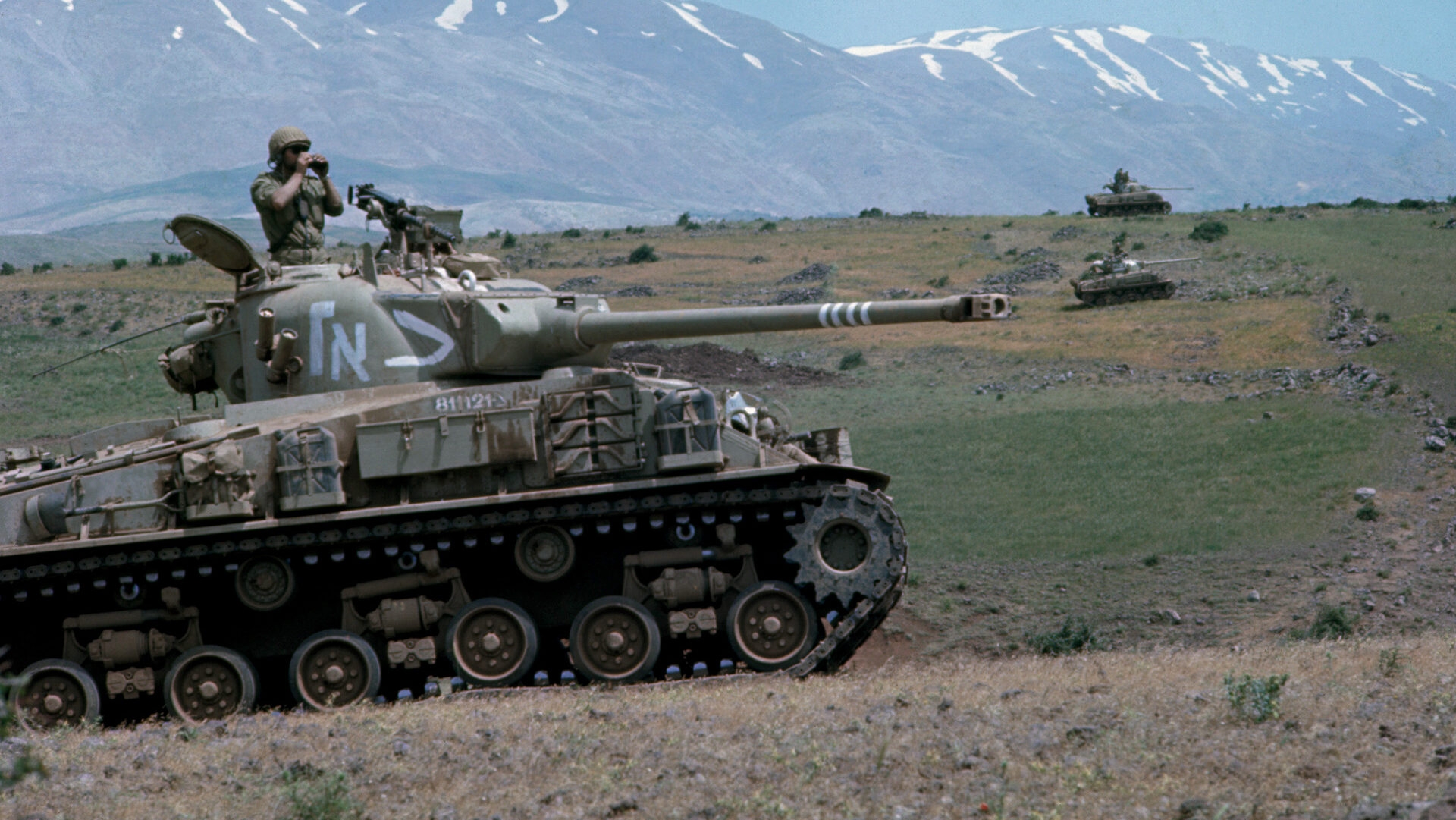
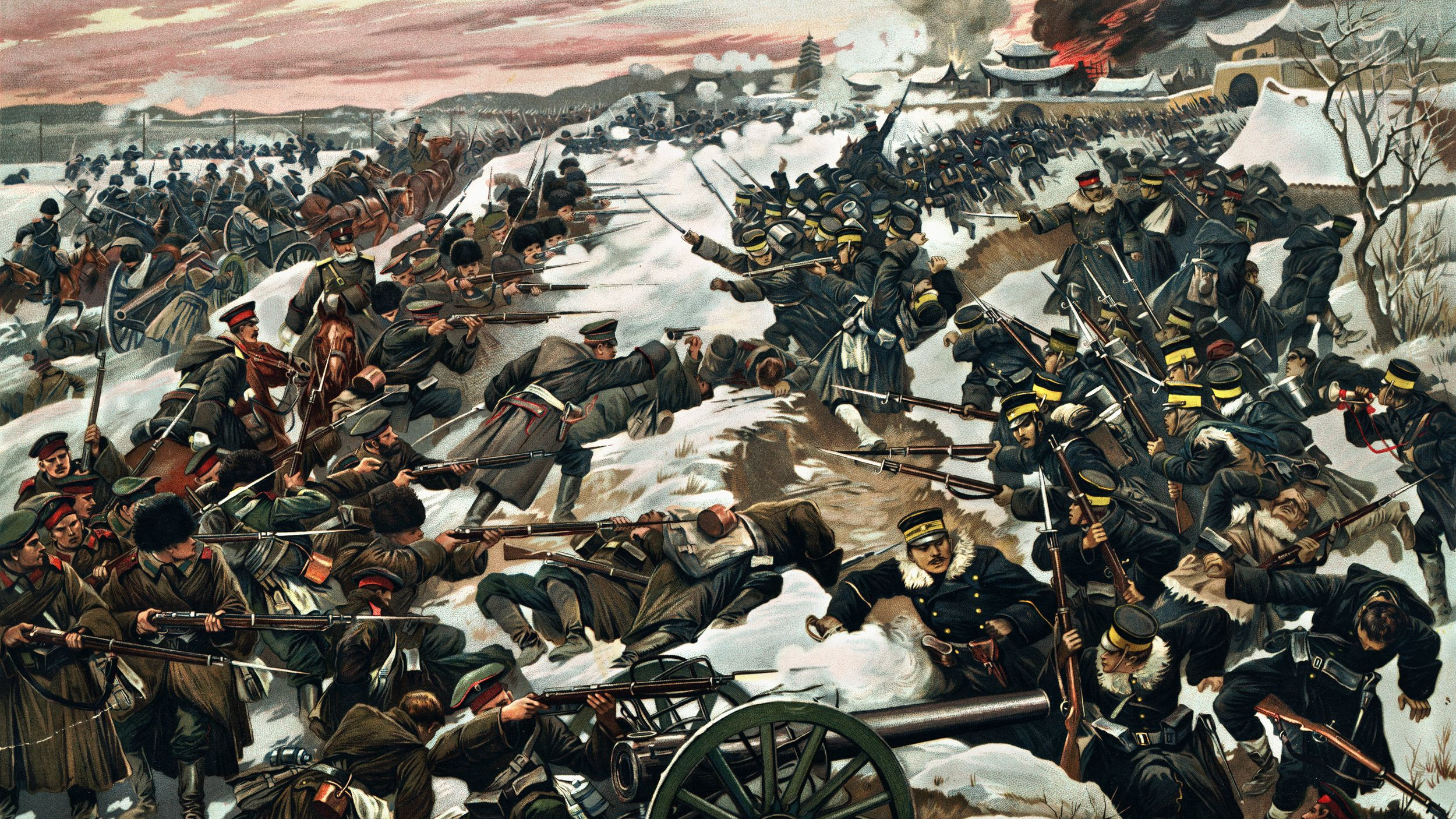
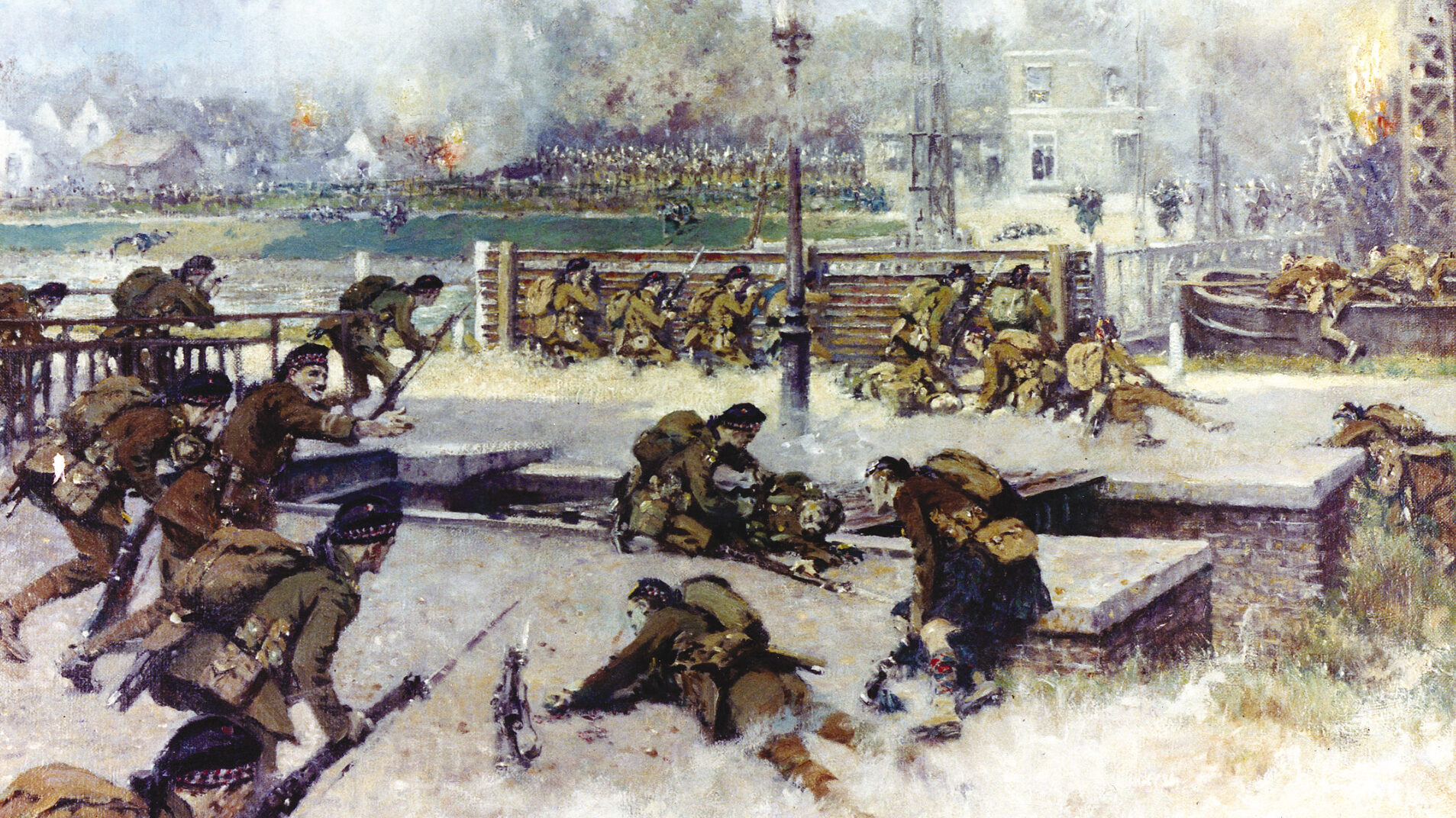
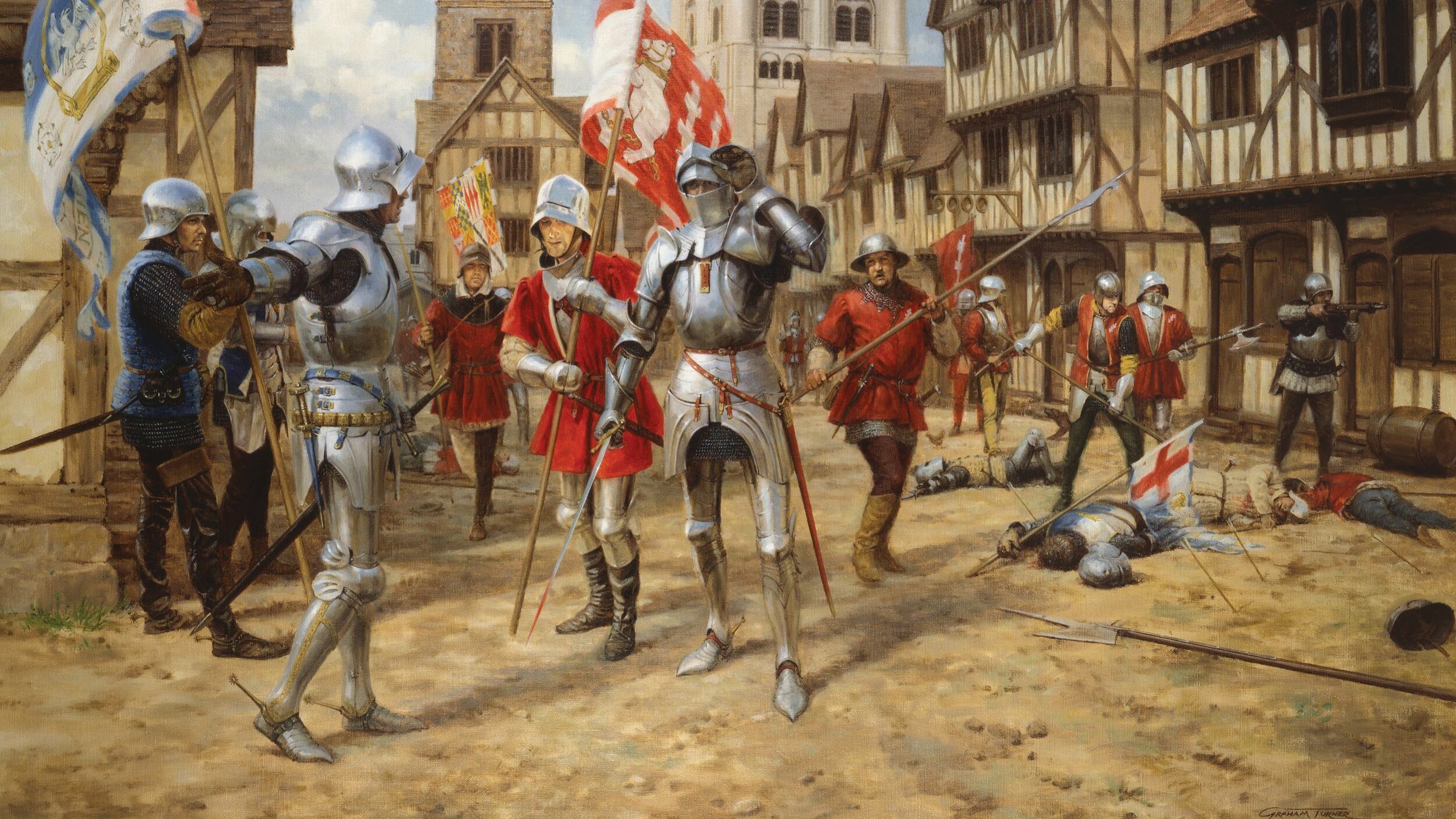
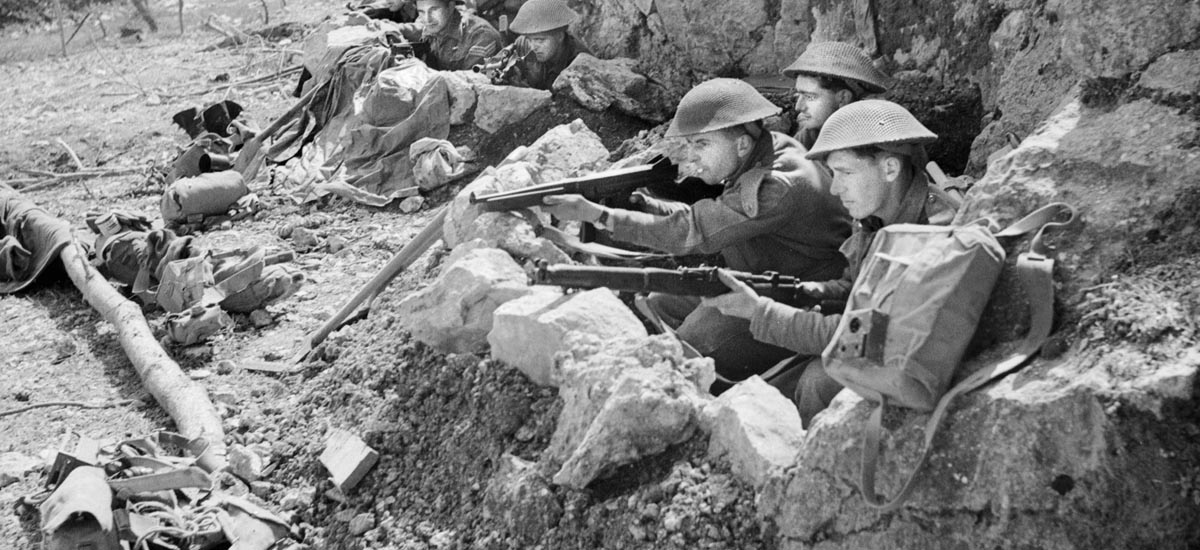
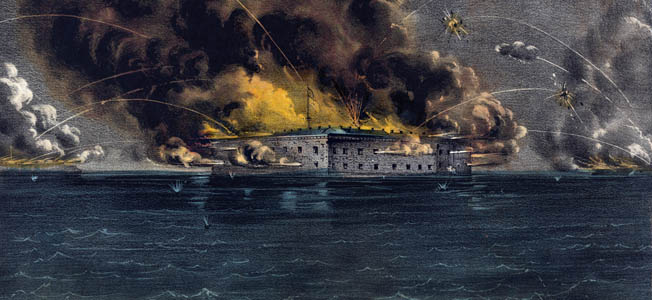
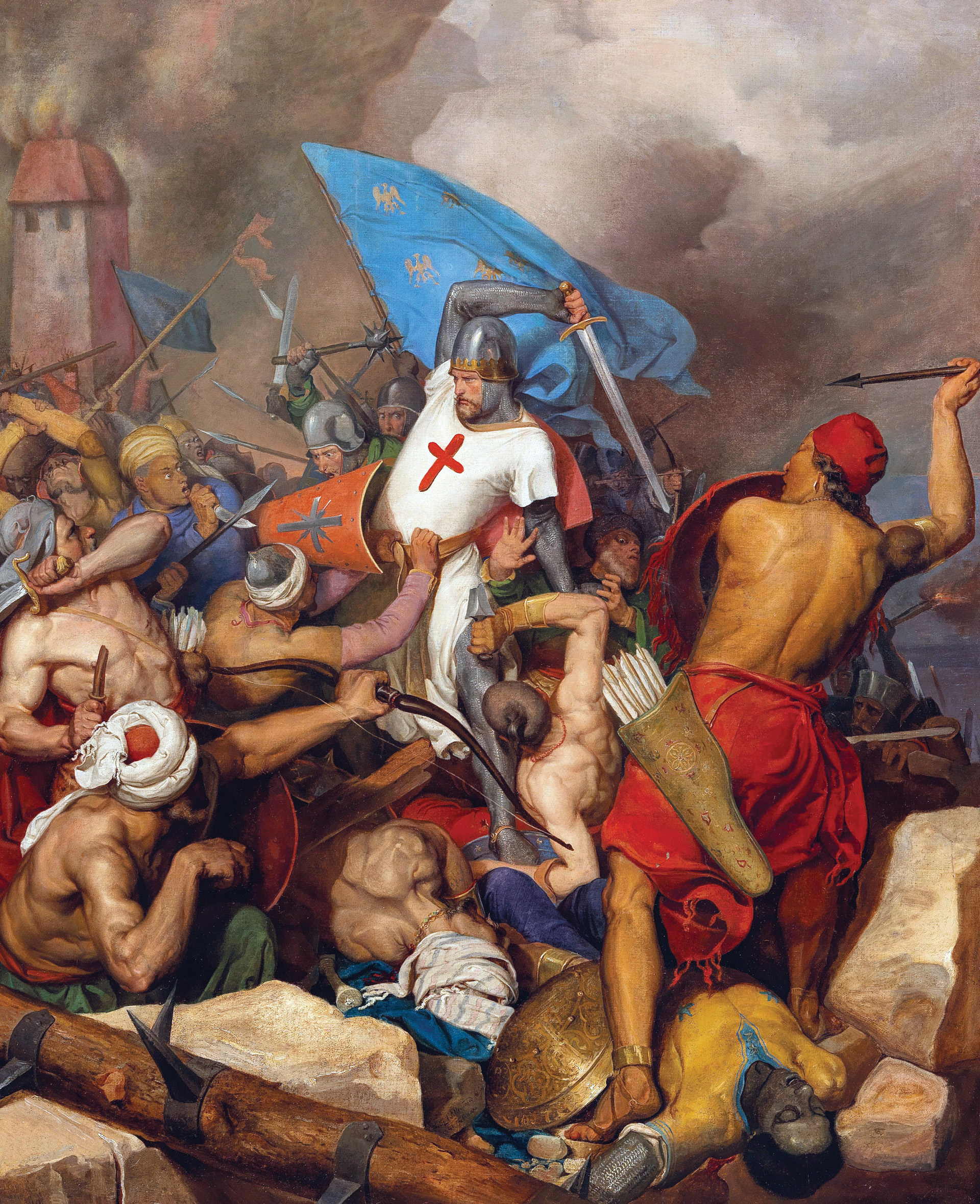
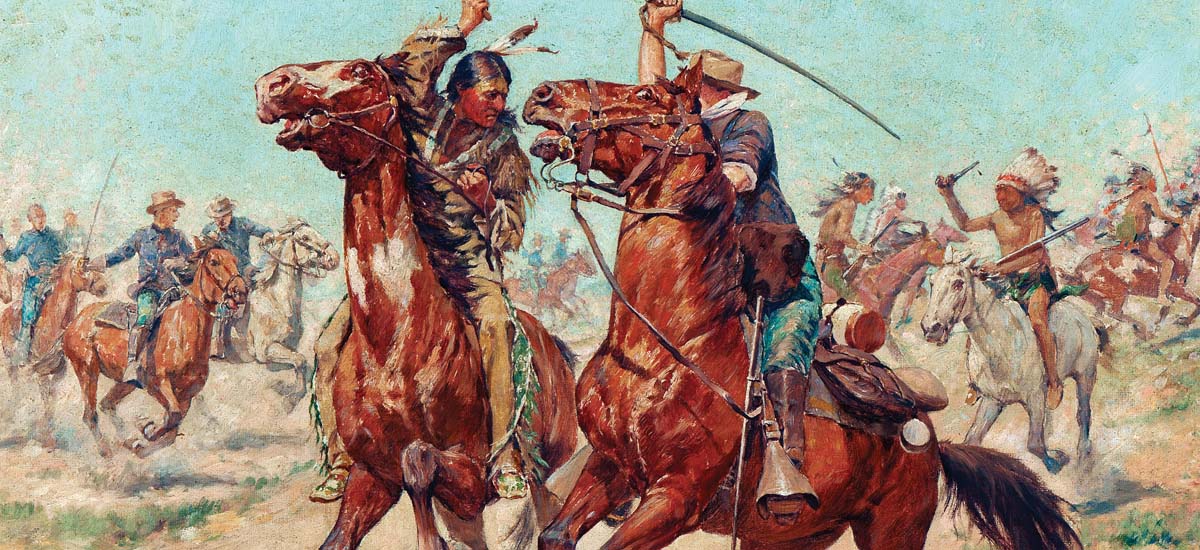
Join The Conversation
Comments
View All Comments